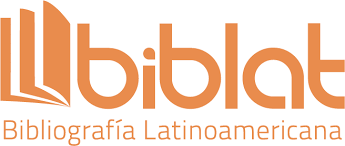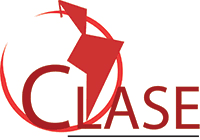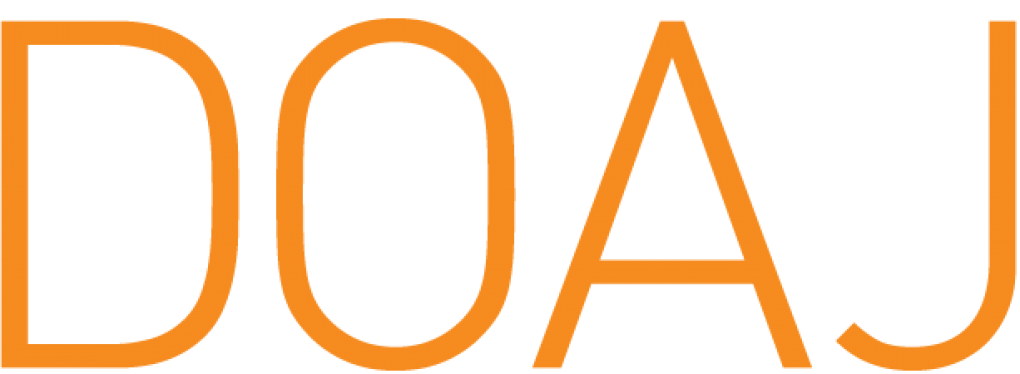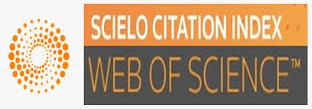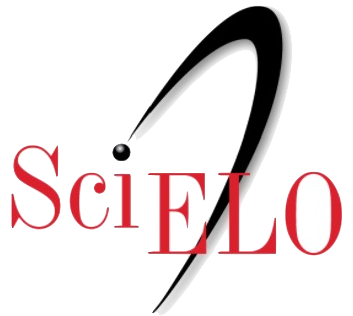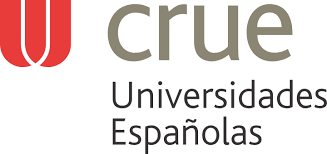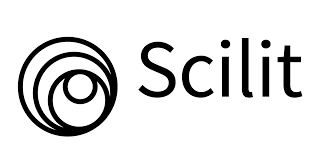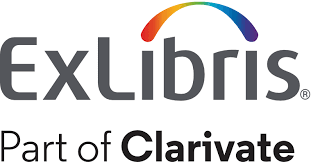Mathematical errors in procedural knowledge when solving quadratic surface problems
DOI:
https://doi.org/10.22335/rlct.v8i1.348Keywords:
deformed definitions, difficulties, problem solving, procedural knowledge, quadratic surfacesAbstract
Problem solving is a critical area in the teaching of mathematics, due to the fact that the student has to implement concepts, abilities, procedures and strategies to succeed. This paper shows the characterization of the types of mathematical errors in the operative knowledge evidenced in a group of students when they solve problems of quadratic surfaces in Vectorial Calculus. This work had as reference the two stage theory of Mayer to solve problems and classification of errors according to Rico L. The study was based on an exploratory and descriptive focus. For the recollection of information an specific open and closed question questionnaire was designed and applied. One of the main findings highlighted is that 32% of the participants wrongly uses the data presented in the enunciate, 56% commit algebraic errors, 41% represent the correspondent graph erroneously, 26% left the graphical representation blank, 44% utilize deform definitions or theorems and 60% make mistakes verifying their found answers. The above rectifies the importance that procedural knowledge has in the solution of problems, independent of the factors or causes that may have originated. This motivates teachers of the area in the search for solutions of this difficulty, utilizing the errors as the source of the teaching activities.
Downloads
References
Álvarez, R. P. (2004). Formación superior basada en competencias, interdisciplinariedad y trabajo autónomo del estudiante. Revista iberoamericana de Educación., 8.
Andrade, A. A., & Atencia, F. G. (2013). ). Incorporación de las tic en las metodologías de los docentes de especialización en docencia de cecar. Revista Logos Ciencia & Tecnología, 5(1), 22-38.
Artero, R. M., & Checa, A. N. (1994). Psicología piagetiana y educación matemática. Revista interuniversitaria de formación del profesorado, (21)., 59-70.
Barrantes, H. (2006). Los obstáculos epistemológicos. Cuadernos de investigación y formación en educación matemática, 1(2).
Brousseau, G., Davis, R. B., & Werner, T. (1986). Observing students at work. In Perspectives on mathematics education. Springer Netherlands.
Carreño, V. G. (2014). La investigación: Un aprendizaje de vida. Revista Logos Ciencia & Tecnología, 6(1), 53-60.
Checa, A. N., & Martínez-Artero, R. N. (2010). Checa, A. N., & Martínez-Artero, R. N. (2010). Resolución de problemas de matemáticas en las pruebas de acceso a la universidad. Errores significativos. Educatio Siglo XXI, 28(1)., 317-341.
Contreras Bello, Y. (2012). Los elementos de la investigación: como reconocerlos, diseñarlos y construirlos. Autor: Hugo Cerda Gutiérrez. Colombia: Editorial Magisterio, 2011, 521 pp. Revista Logos Ciencia & Tecnología, 4(1), 220-221. doi:http://dx.doi.org/10.22335/rlct.v4i1.183
Descaves, A., & Butlen, D. (1999). Introduction du symbolisme à la fin de l’école élémentaire et au début du collège. In Actes du 26ème Colloque de la Corirelem.
Engler, A., Gregorini, M. L., Müller, D., Vrancken, S., & Hecklein, M. (2004). Los errores en el aprendizaje de matemática. Boletín de la SOAREM, 6.
Flórez, E. Acevedo, C. y Vergel, M. (2012). Teoría del contacto aplicada al mecanismo leva palpador cilíndrico: ley de desplazamiento diseñada por curvas de Bézier.
García, J., Segovia, L., & Lupiáñez, J. L. (2011). Errores y dificultades de estudiantes mexicanos de primer curso universitario en la resolución de tareas algebraicas. Funes Uniandes, 145-155.
Kaschefi, H., Ismail, Z., Yusof, Y. M., & Rahman, R. A. (2012). Supporting Students Mathematical Thinking in the Learning of Two-Variable Functions Through Blended Learning. Procedia - Social and Behavioral Sciences, 46, 3689–3695.
Kashefi, H., Ismail, Z., & Yusof, Y. M. (2010). Obstacles in the Learning of Two-variable Functions through Mathematical Thinking Approach. Procedia - Social and Behavioral Sciences,8., 173–180.
Kashefi, H., Ismail, Z., Yuso, Y. M., & Rahman, R. A. (2011).
Promoting Creative Problem Solving in Engineering Mathematics through Blended Learning. In Engineering Education (ICEED), 2011 3rd International Congress on IEEE., 8-13.
Martínez Lozano, J., Vergel Ortega, M., & Zafra Tristancho, S. (2015). Validez de instrumento para medir la calidad de vida en la juventud: VIHDA. Revista Logos Ciencia & TecnologíA, 7(1), 20-28. Recuperado de http://revistalogos.policia.edu.co/index.php/rlct/article/view/206
Martínez Lozano, J., Vergel Ortega, M., & Zafra Tristancho, T. (2016). Ambiente de aprendizaje lúdico de las matemáticas para niños de la segunda infancia. Revista Logos Ciencia & TecnologíA, 7(2), 17-25. Recuperado de http://revistalogos.policia.edu.co/index.php/rlct/article/view/234/274
Mulhern, G. (1989). Between the ears: Making inferences about internal processes. Greer B. & Mulhern G. (Eds.) New Directions in Mathematics Education. Londres: Routledge.
Nortes, A. & Martínez, R. (1996). Ansiedad ante los exámenes de matemáticas. Épsilon 34: 111-120.
Nortes, A. & Serrano, J. M. (1991). Operaciones concretas y formales. España: Universidad de Murcia.
Obando, G. & Múnera, J. J. (2003). Las situaciones problema como estrategia para la conceptualización matemática. Revista Educación y Pedagogía.
Ortega, M. V., Duarte, H. I. & Lozano, J. M. (2015). Desarrollo del pensamiento matemático en estudiantes de cálculo integral su relación con la planificación docente. Revista Científica, 3(23): 19-32. doi:http://dx.doi.org/10.14483/udistrital.jour.RC.2015.23.a2
Ortega, M. V., Lozano, J. M. & Tristancho, S. L. (2014). APPS en el rendimiento académico y autoconcepto de estudiantes de ingeniería. Revista Logos Ciencia & Tecnología, 6(2): 198-208. DOI: http://dx.doi.org/10.22335/rlct.v6i2.21
Páez Páez, J. (2011). Competencias presentadas por los docentes del programa de sistemas de la Escuela Tecnológica Instituto Técnico Central, con respecto al uso de las TIC. Revista Logos Ciencia & Tecnología, 3(1), 56-65. doi:http://dx.doi.org/10.22335/rlct.v3i1.106
Quiroga Ramírez, J. (2010). La Transversalidad curricular en los proyectos pedagógicos: El caso de El CED, el Motorista Bogotá. Revista Logos Ciencia & Tecnología, 2(1), 50-57. doi:http://dx.doi.org/10.22335/rlct.v2i1.66
Rico. (1995). Errores y dificultades en el aprendizaje de las matemáticas.
Ruiz, L. R., Carranza, E. C., & Castro, D. P. (2012). Causales psicosociales de la deserción universitaria. Revista Logos Ciencia & Tecnología, 4(1)., 164-168.
Sabagh Sabbagh, S. (2008). Solución de problemas aritméticos redactados y control inhibitorio cognitivo. Universitas Psychologica, 7(1), 217-229.
Serna, J. R. (2014). Relación subjetiva-objetiva en el desarrollo del pensamiento matemático de objetos reales a objetos matemáticos en la educación, didáctica de las operaciones matemáticas. Revista Logos Ciencia & Tecnología, 6(1), 18-35.
Solaz, A. M. (2014). La resolución de problemas en la prueba de Matemáticas de acceso a la universidad: procesos y errores. Educatio siglo XXI, 32(1)., 233-254.
Trigueros, M., & Martínez-Planell, R. (2010). Geometrical representations in the learning of two-variable functions. Educational Studies in Mathematics, 73(1), 3-19.
Downloads
Published
Issue
Section
License
This journal provides free and immediate access to its content (https://creativecommons.org/licenses/by/4.0/legalcode#languages), under the principle that making research available to the public free of charge supports greater global knowledge exchange. This means that the authors transfer the Copyrights to the journal, so that the material can be copied and distributed by any means, as long as the authors’ recognition is maintained, and the articles are not commercially used or modified in any way.

